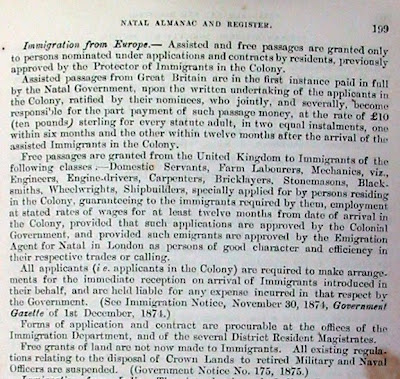In 1882 Donald Currie's Castle Line began regular mail services as far as Durban (i.e. not terminating at Cape Town) and by 1887 both the rival companies, Union and Castle, were providing this service from England to Durban.
These mail ships still had to anchor outside the port in the 'roads' or 'roadstead'. This was due to the existence of the Bar, a sandbank across the entrance to the Bay of Natal, and a significant obstacle in the way of development of the harbour. It was a matter of vital concern because without a port the Colony could not have continued its existence - trade, immigration etc would be impossible.
The depth of water over the Bar depended on certain factors - the quantity of sand or silt built up, onshore winds, currents, tidal scour. During the history of the port, several harbour engineers were employed to remedy the situation, with varying degrees of success.
For passengers, it meant that at the end of a long voyage and with Natal in sight from the deck of their ship, they could have a long wait before they disembarked on dry land. Not only that, but the process of disembarkation was far from easy. It took place in the outer anchorage - by basket. This contraption was made of wicker, with a door in the side through which the passengers would enter. The door would be secured on the outside and the basket winched up then lowered to the deck of the waiting tender (small ship for ferrying passengers in and out of the port). When the passengers emerged from the basket, it would go back for another group. Approximately eight to ten people could be carried each journey, depending on their size.
It wasn't an exercise for the squeamish, particularly in a strong wind and with a choppy sea causing the tender to bob up and down, not necessarily synchronised with the movements of the larger incoming vessel.
Passengers entering the basket at Durban, postcard 1901









